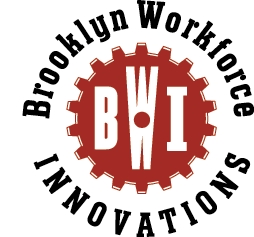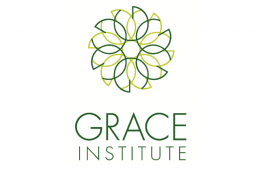 Brooklyn Workforce Innovations isn’t a well-known name here in New York City. There aren’t advertisements on the subway, or anywhere on the streets of Brooklyn. A Google search doesn’t even place them in the top 50 results for NYC workforce centers. Without diligent searching, you’re not likely to come across them at all. It seems that that’s the problem with workforce centers. They provide a much needed service that the public doesn’t know exists.
Brooklyn Workforce Innovations isn’t a well-known name here in New York City. There aren’t advertisements on the subway, or anywhere on the streets of Brooklyn. A Google search doesn’t even place them in the top 50 results for NYC workforce centers. Without diligent searching, you’re not likely to come across them at all. It seems that that’s the problem with workforce centers. They provide a much needed service that the public doesn’t know exists.
I met with KenTara John, Program Coordinator for the Brooklyn Networks program at Brooklyn Workforce Innovations (BWI). Having obtained her undergraduate and graduate degree, Ms. John’s story is not an unfamiliar one. Those degrees didn’t get her where she expected. Working in non-profit organizations wasn’t enough to make up for the debt she accumulated and the skills she gained weren’t what she needed to maintain or flourish in the workplace.
During our class discussions, one sentiment became clear – workforce centers exist because college is not the path for everyone. Whether it’s a lack of education, a challenging home life or dissatisfaction with their current jobs, adults turn to workforce centers to help them create opportunities for growth. This is where organizations like Brooklyn Workforce Innovations come in.
Organization Overview
The stakeholders vary depending on the funding sources. In general, stakeholders include community based organizations, parole offices, schools, youth programs, substance abuse programs, HR administrators, ex-convicts, unemployed candidates, underemployed candidates, and New York’s Workforce 1 Career Center.
The programs at BWI focus on practical and immediately applicable skills. Unlike a traditional college, their programs culminate in a certification, not a degree. These certifications are transferable, generally opening up access to a broader range of opportunities. One of the motivations of participants is that completing a program at BWI provides you with a skilled trade or as Ms. John explained, “Something someone can’t take away”. The certificate is a tangible and measurable representation of the skills participants learned during the program. BWI’s include:
- Brooklyn Networks: Which leads to a career in voice and data telecommunications cable installation
- Red Hook on the Road: Which helps students get their commercial driver’s license (CDL)
- Brooklyn Woods: A woodworking and fabrication program
- Made in NY PA Training: Part of NYC’s initiative to cultivate diversity in the film industry
- NYCHA Resident Training Academy: A sector-focused training program that leads to job placement within local housing developments
Ms. John is the Program Coordinator for the Brooklyn Networks. Spanning six weeks, the program is hosted at New York City College of Technology (CUNY). It’s an installation program that focuses on cabling for network, data and security. Upon completion, participants sit for the BISCI exam, a credentialing exam that tests theoretical and practical components.
Although all of the programs through BWI are practical or technical programs, all curriculum focuses on both hard and soft skills and places equal weight on each. There is a high demand for candidates to demonstrate situational judgement, a skill that has been flagged by employers as missing, even in college graduates.
Participant Demographics and the Selection Process
The screening and selection process for Brooklyn Networks is rigorous. The selection process consists of multiple steps. The first is an orientation that is held weekly throughout the year. Candidates are required to take the TABE, an exam that gauges math and reading levels. To be eligible for Brooklyn Networks, candidates must be able to pass on an 8th grade level. Approximately half of the candidates fail this exam. They offer retests for those who score between the 5th and 7th grade levels. If they fail that, Ms. John recommends that they take additional courses and then reapply.
The next step is an interview with one of the program staff that asks personal questions about their current situation and the motivations behind joining the program. It’s important that candidates are interested in the field and aren’t just looking for a quick way to make money. There’s a high level of accountability on the participants; they’ll be responsible for completing HW and projects, maintaining consistent attendance, and remaining professional. Ms. John has identified that this as a ‘big risk program’ because many participants have not had this kind of responsibility, especially if they did not complete HS.
If the participants move forward from there, extensive documentation is required by the state and federal government and by some stakeholders. Following that, there is a drug screening. If candidates fail, they aren’t allowed to reapply for one year. The screening is not a surprise. On the contrary, candidates are notified so that they have a chance to get clean before it happens. Once those steps are complete, applicants ‘try out’. They come in on a Monday, go over the details of the program and then attend sample classes on Tuesday and Wednesday. Finally, the director and program instructors evaluate overall performance and interview responses. This committee selects 15 participants and those that are accepted start the next day.
The most interesting portion of this visit was the level of detailed that went into preparing the candidates. The selection process is extremely discerning but there’s a quota to meet, which can affect the way the program is run. However, Ms. John demonstrated true interest and compassion in seeing candidates and participants succeed. Given the background of participants, I believe this can make a world of difference for those who have faced discouragement.
Program Structure and Outcomes
The Brooklyn Networks program is five days a week, from 9-5. There’s an exam every week and 2 to 4 HW assignments each night. The week is structured to include practical and professional skills. There are 3.5 days of lab training and 1.5 days of job readiness training.
Student progress is closely monitored by the instructor, who is responsible for curriculum and homework.
Because of the strict policies, rigorous curriculum and expectation setting, the pass rate for the certification exam is 91%. Unlike course work, the BICSI is graded pass or fail. To ensure that students are prepared above and beyond the requirements of the exam, the level of rigor in the classroom is much higher than what is required. Upon successful completion of the program, BWI offers job placement assistance for two years. There is also a follow up 60, 90, 180 and 365 days after graduation to gauge candidate success in the field.
Social Impact
Beyond providing job applicable skills, BWI aims to empower participants to aspire to higher levels of personal success. It shows participants that they have the drive and discipline to complete their GED or get a college degree. For others, it’s a way to excel beyond cultural expectations. Ms. John shared a few of these stories, including a female Muslim graduate who was told by her family that she couldn’t complete the program because she’s a woman. She also shared the story of Pete Rosado who said he always wanted to travel the world but ended up in prison, doing traveling of a different kind. In spite of his background, Mr. Rosado graduated and is now Lead Tech at his company.
In addition to the individual impact on the graduates, BWI and other workforce centers have the opportunity to equalize pay within their industries. All graduates from Brooklyn Networks has a starting wage of $12-$13, regardless of gender or race. Employers may have the option to pay more, but they cannot pay any less, which is at odds with how traditional hiring works.
Challenges and Looking Forward
Although BWI has been around for 15 years, they face some common problems. Outreach and recruitment was more robust in 2013 but changes in the economy have affected the number of applicants. In turn, this has impacted the quality of applicants and the program. With no official outreach process, they rely on referrals and word of mouth to source candidates. Other issues include alumni data tracking, getting women to complete the training, student engagement that helps prevent burnout and withdrawals, external dependencies, and lack of reliable record keeping systems. Additionally, attendance is particularly challenging due to the backgrounds of participants. If a student misses enough classes, they will need to leave the program, regardless of the reasons. Students who are counseled out are encourage to reapply once their schedule stabilizes.
Ms. John and I spent time to discussing the struggles associated with tracking student data. Above all else, being able to measure the success of the students during and after the program is the biggest challenge that many training programs face. We swapped stories and ideas about how to improve our current systems and I was surprised to hear that they have no real process for storing records and it is mostly paper based. Given the frequency at which technology is changing, I believe this lack of integration (which was also present when reviewing the outreach process) has the potential to be detrimental to BWI’s programs. For all the work they are doing, further investment in technology and outreach would make a huge difference in program quality and reporting.



